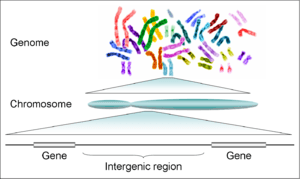
What does de-extinction mean for biology and the environment?
A bird that once darkened the skies of the 19th-century U.S. no longer exists, except as well-preserved museum specimens bearing bits of DNA. An ambitious new effort aims to use the latest techniques of genetic manipulation to bring the passenger pigeon back, as North Dakotan Ben Novak, a would-be de-extinction scientist working on the Revive & Restore project at the Long Now Foundation, told the crowd at the TEDxDeExtinctionevent here on March 15.
“This [pigeon flock] was a biological storm that was rejuvenating resources and allowing other animals to thrive,” Novak said of the storms of Ectopistes migratorius feces that used to fall like rain on the landscape of eastern North America. Plus, with theregrowth of forest on the east coast “there is more passenger pigeon habitat every year.”
But if a bird looks like an extinct passenger pigeon, has some of the genetic code of the passenger pigeon, but does not act like a passenger pigeon because it is raised by other breeds and few in number: is it a true passenger pigeon? That is just one of the questions posed by the idea of de-extinction—deliberately resurrecting species killed off by human activity or inactivity. And that question may just challenge one of the fundamental concepts of biology: what determines a distinct species.
Welcome to the new era of the hybrid. Species have always been promiscuous and enjoyed porous boundaries, but synthetic biologists and other scientists seem set to blur those boundaries out of existence.
Tainted animals
The bison now repopulating the U.S. West’s plains bear the genetic traces of their cattle forebears, residue of an effort that began in the 19th century to breed an animal that could survive the brutal Great Plains winters and drink less water than European cows. Wolves racing through the western landscape with black coats instead of the traditional gray can thank ancestors that got frisky with dogs. And does a Florida panther that carries genes from the Texas cougar count as less of a panther, even if the effort is all that stands between the species and extinction?
“Purity is not found in species,” argued Kent Redford, a conservation biologist and former chief scientist at the Wildlife Conservation Society at the DeExtinction event. “We ourselves are not pure,” bearing traces of genetic intermixing with Neandertals, Denisovans and perhaps other extinct hominids.
So what counts as a species then? Per the dictionary, a species is “a class of individuals having common attributes or designated by a common name.” But biologists more precisely count species as a group of organisms that can interbreed to produce fertile offspring. So the horse and donkey are species, although those aren’t their species names, and the mule is—well, it’s been a little unclear since Carl Linnaeus came up with the species designation in 1753. As a (usually) sterile hybrid, the mule doesn’t count.
But mules certainly do live and cases of mule fertility have been reported from antiquity down to the present day. Mules have even been cloned—and now, with the development of techniques to cut and splice DNA almost at will, scientists might be able to remake the mule into a fertile hybrid. But first they would rather apply the technique to endangered or extinct animals, like the Pyrenean ibex known as the bucardo or the Asian wild cattle called the banteng.
Rise of the hybrid
When a new animal is born it bears a mixture of both parents’ genetics. So what then is an animal that has parents from two different species? The term hybrid was first used to describe the offspring of a tame sow and a wild boar. Or, as Redford put it, “something humans wanted.” But now hybrids often bear a linguistic taint, neither fish nor fowl—almost as bad as a genetically modified organism, which, of course, all commercial species now are to one extent or another.
The Latest Bing News on:
Efforts to Resuscitate Extinct Species
- Hope Lives On For The Near-Extinct ‘Jambato Frog’—But Not For Its 2 Close Cousinson May 9, 2024 at 10:46 am
The Jambato harlequin frog has been teetering on the edge of extinction for ... and collection efforts were carried out for the next two decades, but without success. A 2003 paper had this to say ...
- How to Recover Endangered Species – Or Noton May 8, 2024 at 5:00 pm
Why not? It is impossible to overstate – or even understand – how hard it is for USFWS to wrap its mind around the concept of reintroducing endangered species. For 50 years, the Endangered Species Act ...
- Saying Goodbye: Species We Lost to Extinction in 2023on May 4, 2024 at 5:00 pm
Despite dedicated conservation efforts, its small population dwindled due to habitat loss, disease, and the introduction of invasive species. The Po'ouli's extinction serves as a stark reminder of the ...
- A Ferret Died in 1988 and Spawned 3 Clones. Now, They Could Save Their Entire Species.on April 29, 2024 at 8:44 am
In 2020, the black-footed ferret became the first endangered species in North America to be cloned in an effort to increase its vulnerable numbers. Now, the U.S. Fish and Wildlife Service, in ...
- Conservation efforts are working to save species and protect biodiversity, study findson April 26, 2024 at 2:00 am
Nearly one out of every three species on the plant faces extinction, according to recent ... that environmental intervention and conservation efforts are working, said Dr Penny Langhammer ...
- Budget squeezes hindering US efforts to save endangered specieson April 25, 2024 at 5:00 pm
leaving it to do more with less and to begin conservation efforts at bleak starting points. Between 2000 and 2009, for example, the median wait time for listing threatened or endangered species under ...
- Scientists clone two black-footed ferrets to save endangered specieson April 23, 2024 at 9:55 am
The black-footed ferret is one of North America’s most endangered mammals. The post Scientists clone two black-footed ferrets to save endangered species appeared first on Talker.
- How a Cloned Ferret Inspired a DNA Bank for Endangered Specieson April 21, 2024 at 5:00 pm
As climate change, habitat loss and dwindling food supplies bring ever more endangered species “crashing ... head of de-extinction efforts at Revive & Restore, a nonprofit outfit that applies ...
- 2 more endangered ferrets cloned from animal frozen in the 1980s: "Science takes time"on April 18, 2024 at 5:00 am
Two more black-footed ferrets have been cloned from the genes used for the first clone of an endangered ... animals found in the wild, the U.S. Fish and Wildlife Service announced Wednesday ...
- Cloning makes three: Two more endangered ferrets are gene copies of critter frozen in 1980son April 17, 2024 at 1:30 pm
Two more black-footed ferrets have been cloned from the genes used for the first clone of an endangered species ... to one of the last such animals found in the wild, the U.S. Fish and Wildlife ...
The Latest Google Headlines on:
Efforts to Resuscitate Extinct Species
[google_news title=”” keyword=”Efforts to Resuscitate Extinct Species” num_posts=”10″ blurb_length=”0″ show_thumb=”left”] [/vc_column_text]The Latest Bing News on:
De-extinction
- Can genetically modifying a rare marsupial save it from extinction?on May 7, 2024 at 9:31 pm
Researchers are aiming to make the northern quoll resistant to the toxic cane toads wiping it out in Australia, but little progress has been made ...
- Colossal Biosciences’ Thylacine Gene-Editing Technologies Provide Hope for Australia’s Endangered Northern Quollon May 7, 2024 at 6:00 pm
MELBOURNE, Australia & DALLAS--(BUSINESS WIRE)--Today scientists from Colossal Biosciences, the world’s first de-extinction company, and the University of Melbourne announce a major step forward in ...
- Will microbes bring an end to the plastic disaster? The answer could be an artificial microbe that feasts on plasticon May 6, 2024 at 7:30 pm
Ongoing lab studies were promising enough for Colossal Biosciences to support a Harvard team to work towards developing X-32 to address the plastics crisis.
- What It'll Take to Create 21st-Century Mammoths, Dodos, and Thylacineson April 27, 2024 at 8:16 am
We don’t fully understand how to create an artificial placenta at the moment. We don’t really understand the intricacies of the developmental process. This is all information that we will learn along ...
- Reviving the Past, Safeguarding the Future: Challenges and Innovations in Cell Culture for De-Extinctionon April 19, 2024 at 12:14 pm
In this webinar, our expert speakers will discuss the cell culture aspects of the de-extinction project, from making a large number of precision genome edits in single cells, growing and expanding ...
- The Tasmanian tiger might be extinct but Aussies are determined to find it or bring it backon April 14, 2024 at 4:32 pm
Pask has raised $15 million for a de-extinction project in partnership with American company Colossal Biosciences, which counts Leonardo DiCaprio, Paris Hilton and even the C.I.A. among its backers.
- Colossal Biosciences has made headlines as the de-extinction startup primed to bring back the woolly mammoth. Here’s how the business model actually works.on April 11, 2024 at 5:03 am
But it does raise a question: As advances in technology make the once science fiction idea of “de-extinction” closer to becoming a reality, what does it actually mean for a de-extinction ...
- The race to resurrect the dodoon April 10, 2024 at 5:00 pm
The chief scientist behind these “de-extinction” efforts says bringing back lost species can help protect those that are endangered. Get even smarter with the “Make Me Smart” newsletter.
- A Groundbreaking "De-Extinction Project" Aims To Revive The Woolly Mammoth, A Species That's Been Extinct For Over 4,000 Years, Using Stem Cell Reprogrammingon March 26, 2024 at 5:53 pm
Researchers at the company assert that the de-extinction project is not just a scientific breakthrough; the act of reviving a species that has been gone for thousands of years can benefit the ...
- De-extinction: digital lab tech supports a mammoth projecton April 6, 2023 at 3:09 am
“Our goal is to build an end-to-end scientific pipeline for de-extinction,” says Eriona Hysolli, who heads Colossal’s biology division and leads its woolly mammoth project. “People are ...
The Latest Google Headlines on:
De-extinction
[google_news title=”” keyword=”de-extinction” num_posts=”10″ blurb_length=”0″ show_thumb=”left”]









